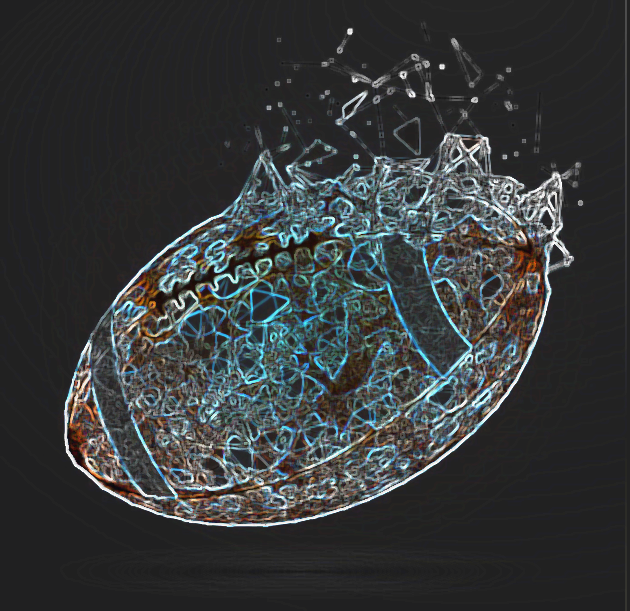
2020 was quite a year for sports. Had you asked me back in April whether we’d even see some semblance of pro and college sports during the year of COVID, I would have given you my patented “No way” response.
But all the major pro and college sports found a way – using so-called “bubbles,” lots of virus testing, and other methods to pull it off. Admittedly, the NFL seemed to have the most setbacks, including a bunch of cancelled and postponed games that made the season frustrating at times.
But along the way, fans learned just how much they had missed spectator sports in the early days of COVID, and what they’d put up with to watch their favorite teams play in front of empty stadiums filled only with those cardboard heads in the end zones or behind the plates and nets.
COVID brought the best out when it came to just how scrappy (and desperate) sports leagues and fans could be, and just how far they’d go to experience the thrills of victory and the agony of defeat on diamonds, gridirons, courts, and ice rinks.
The NFL had the greatest challenges because of the sheer numbers of players on the field, large coaching and support staffs, and of course, the helmet to helmet physical contact that comes with the sport. It was a learning experience that no team wants to endure again.
But another NFL Football challenge occurred over the holiday layoff. And this time, fans, teams, and networks were about to get an important lesson about the relationship between dynamic content and new platforms of distribution.
 Like many of you, I watched my fair share of football during these past couple weekends – college, pro – whatever was on. At a certain point, Netflix just loses its appeal.
Like many of you, I watched my fair share of football during these past couple weekends – college, pro – whatever was on. At a certain point, Netflix just loses its appeal.
And on the day after Christmas, an interesting “experiment” took place, packed with lessons for content creators, talent, ownership, and fans alike. It speaks to how usage patterns and our norms are shifting.
It also suggests the storied relationship between content and distribution is changing – quickly.
On Saturday, December 26th, there were three NFL games scheduled for what was hoped would be a big viewing day. But only two of them were on TV as we know it.
The third was stream-only.
In a first for the NFL, the 49ers vs. Cardinals game was only carried on Amazon Prime Video and on Twitch (also owned by Amazon). Other streaming outlets included Verizon, as well as on the league’s and each team’s streaming platforms.
For a league that has been totally dependent on TV ad revenue pretty much since the onset of the Super Bowl era, this was a big deal. And it sends media organizations a message that fans will find your content pretty much anywhere – if it’s good enough.
But how were the ratings? How could a streaming-only game compete against the tried and true numbers that only broadcast and cable could provide?
According to Variety, pretty damn well.
On that mélange of streaming platforms, the game drew an “average minute audience of 4.8 million fans. Games that have only been broadcast on the NFL Network (not on the major networks) averaged 5.6 million viewers.
 Amazon is not the only one doing a not-so-humble brag over these results. The NFL, eager to utilize streams for distribution, post-marketed the game’s viewership totals, noting that north of 11 million viewers “cumed” the game via the stream.
Amazon is not the only one doing a not-so-humble brag over these results. The NFL, eager to utilize streams for distribution, post-marketed the game’s viewership totals, noting that north of 11 million viewers “cumed” the game via the stream.
Experiment #2 for Amazon comes up this weekend – the first streaming-only playoff game in league history. The Wild Card game on Sunday afternoon between the Bears and the Saints will return to Amazon Prime and Twitch.
For radio companies, these “experiments” echo the lengths to which fans will go to find programming when regular broadcast radios aren’t readily available.
As we’ve learned during COVID, the streaming version of a radio station on mobile devices, computers, tablets, and smart speakers can work – IF audiences know where to look and the quality is as good as the broadcast.
And another of those odd consequences from the pandemic is how many adults – OK Boomers – were forced to improve their tech skills in order to enjoy their preferred content or to spend virtual time with their families, friends, and co-workers. Most can now participate on a Zoom call, download an app, connect a Bluetooth speaker, and access a stream. (Or they know who to call for help.)
If you stream it, the fans will come. But only when you follow these rules:
- It must be something they can’t get anywhere else.
- The distribution platform (in this case, streaming) must be high-quality.
- They must know about how and where to find it.
Radio broadcasters have been guilty of skipping steps. As we all know, the industry has struggled to deliver an even mediocre streaming experience – buffering, clunky  commercial inserts, and a lack of clear audience communication are far too common.
commercial inserts, and a lack of clear audience communication are far too common.
Viewers of the game on Amazon Prime or Twitch stopped thinking about distribution outlets the moment the content – or the game – began. Even hardcore fans won’t put up with a substandard experience.
These “televised” streaming events are showing broadcasters, sports executives, and tech companies alike how the possibilities of free and subscription can work in the streaming ecosphere.
And soon, there may be a new mass media mantra:
“Follow the content!”
- What To Do If Your Radio Station Goes Through A Midlife Crisis - April 25, 2025
- A 2020 Lesson?It Could All Be Gone In A Flash - April 24, 2025
- How AI Can Give Radio Personalities More…PERSONALITY - April 23, 2025




The world has changed dramatically Fred, since last March at Covid’s outset. You take any business trend 10 years before the pandemic and you’ll see that we are there RIGHT NOW, in a digital sense. It took Apple 35+ years to reach a market cap of 1 trillion. They reached their 2nd trillion in the first 20 weeks of lockdown. That’s scale that we’ve never seen before and why Amazon will be outbidding sports networks for prime time games in the very near future.
Jimmy, it sure looks that way. And Bezos is laying the groundwork for streaming video, just like he did with e-commerce. Prove the concept, put out a quality product, grow the numbers – and things seem to take care of themselves. Thanks for the comment.